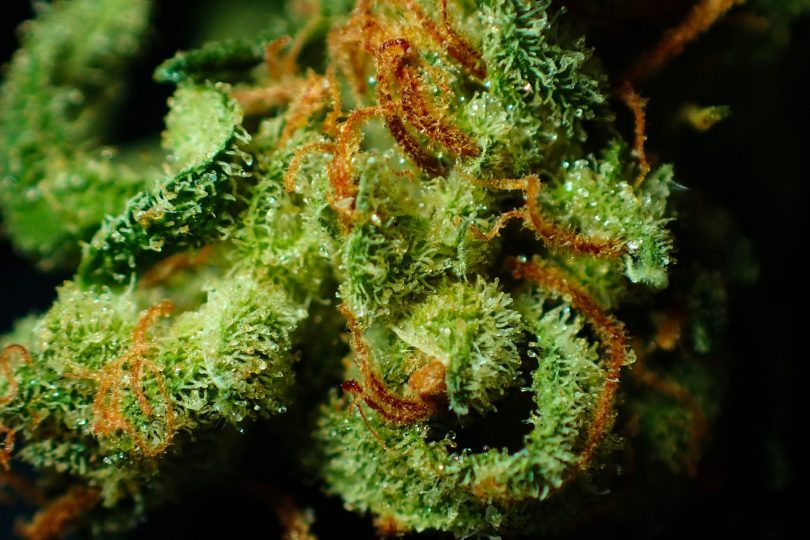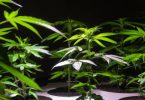Ready for the next big thing in cannabis cultivation? Like sports agents seeking talent from farm teams, cultivators may begin shifting their emphasis away from the big league hitters delta-9-tetrahydrocannabinol (THC) and cannabidiol (CBD). The minor leagues — aka, the minor cannabinoids — are oozing with untapped potential.
The National Center for Complementary and Integrative Health (NCCIH) slated $1.5 million in funding research towards the pain-relieving properties of minor cannabinoids for 2019. Unfortunately, chemovars that maximize “minor cannabinoids” (thus making them “major cannabinoids”) are still fairly rare. But for breeders and cultivar hunters, this presents great opportunity.
Cannabigerol (CBG)
Cannabigerol (CBG) is the chemical precursor for delta-9-tetrahydrocannabinol (THC) and cannabidiol (CBD). [1] Early research shows promise for CBG against inflammatory bowel disease [2], bladder dysfunction [3], and neuroinflammation [4]. Extracting minute quantities of CBG from typical cannabis biomass is not cost effective — genetics are the key to efficiently producing high concentrations.
OregonCBDseeds is one company on the frontlines of CBG seeds that meet industrial hemp standards (i.e., less than 0.3% THC):
- Stem Cell®: a “CBG dominant [chemovar]” designed for “biomass” and minimized odor, with the interesting caveat that the trichomes are apparently less sticky.
- White CBG®: a fast-growing cultivar with a “creamy lemon terpene profile”; the company points out that “stellar individuals [top] out at almost 20%” CBG.
Spanish company Hemp Trading has also developed seeds with genetics that block the synthesis of THC and CBD, effectively leading to a cultivar with upwards of 15% CBG. Due to the growing interest in CBG, some vendors, such as Steve’s Goods in Colorado, offer CBG oil tinctures and isolates. Hemptown USA vends proprietary CBG flower and crude extract.
Tetrahydrocannabivarin (THCv)
THCv is a cannabinoid receptor antagonist [5] implicated in appetite suppression, obesity therapy, and blood sugar regulation [6,7]. It is both coveted and rare. The hunt for THCv genetics recently inspired the founders of Green House Seed Company to explore jungle regions of the Republic of Congo, where they turned up a cultivar with an underwhelming (but still significant) 1.1%.
The conventional option for psychoactive cannabis cultivators is Durban Poison, which generally contains around 0.5–1% THCv. As a South African landrace cultivar, Durban Poison is widely available from seed vendors.
Amsterdam-based company Dutch Passion is developing a chemovar with 6-8% THCv (and similar amounts of THC) scheduled for release in 2020. The uber-secretive chemovar Doug’s Varin is popularly considered to produce the highest TCHv, but seeds are not available, and information on the cultivar approaches the status of myth.
Of course, this is only a glimpse of the phyto-magic available for creative and tenacious cultivators. After all, at least 113 cannabinoids have been isolated from Cannabis sativa L. [8] In part 2, we’ll take a look at some of the other “minor” cannabinoids and the chemovars that promote them to the major leagues.
References
- Meijer, E. P. M. De, and K. M. Hammond. “The Inheritance of Chemical Phenotype in Cannabis Sativa L. (II): Cannabigerol Predominant Plants.” Euphytica, vol. 145, no. 1, 2005, pp. 189–198, doi:10.1007/s10681-005-1164-8. Journal Impact Factor = 1.527, Times Cited = 54
- Borrelli, Francesca, et al. “Beneficial Effect of the Non-Psychotropic Plant Cannabinoid Cannabigerol on Experimental Inflammatory Bowel Disease.” Biochemical Pharmacology, vol. 85, no. 9, 2013, pp. 1306–1316., doi:10.1016/j.bcp.2013.01.017. Journal Impact Factor = 4.825, Times Cited = 100
- Pagano, Ester, et al. “Effect of Non-Psychotropic Plant-Derived Cannabinoids on Bladder Contractility: Focus on Cannabigerol.” Natural Product Communications, vol. 10, no. 6, 2015, doi:10.1177/1934578×1501000653. Journal Impact Factor = 0.554, Times Cited = 19
- Valdeolivas, Sara, et al. “Neuroprotective Properties of Cannabigerol in Huntington’s Disease: Studies in R6/2 Mice and 3-Nitropropionate-Lesioned Mice.” Neurotherapeutics, vol. 12, no. 1, 2014, pp. 185–199., doi:10.1007/s13311-014-0304-z. Journal Impact Factor = 5.719, Times Cited = 36
- Thomas, Adèle, et al. “Evidence That the Plant Cannabinoid Δ9-Tetrahydrocannabivarin Is a Cannabinoid CB1 and CB2 Receptor Antagonist.” British Journal of Pharmacology, vol. 146, no. 7, John Wiley & Sons, Ltd (10.1111), Dec. 2005, pp. 917–26, doi:10.1038/sj.bjp.0706414. Journal Impact Factor = 6.81, Times Cited = 112
- Dawson, David A. “Synthetic Cannabinoids, Organic Cannabinoids, the Endocannabinoid System, and Their Relationship to Obesity, Diabetes, and Depression.” Molecular Biology, vol. 07, no. 04, 2018, doi:10.4172/2168-9547.1000219. Journal Impact Factor = 0.932, Times Cited = 3
- Tudge, Luke, et al. “Neural Effects of Cannabinoid CB1 Neutral Antagonist Tetrahydrocannabivarin on Food Reward and Aversion in Healthy Volunteers.” International Journal of Neuropsychopharmacology, vol. 18, no. 6, 2015, doi:10.1093/ijnp/pyu094. Journal Impact Factor = 4.207, Times Cited = 24
- Aizpurua-Olaizola, Oier, et al. “Evolution of the Cannabinoid and Terpene Content during the Growth of Cannabis Sativa Plants from Different Chemotypes.” Journal of Natural Products, vol. 79, no. 2, Feb. 2016, pp. 324–331, doi:10.1021/acs.jnatprod.5b00949. Journal Impact Factor = 4.257, Times Cited = 88









Thanks for finally writing about >Chemovars with High “Minor” Cannabinoids:
Part 1 – Terpenes and Testing Magazine <Loved it! http://www.shangpinzhaipei.com/comment/html/?73903.html
Pretty nice post. I just stumbled upon your blog and wished to
say that I have really enjoyed surfing around your blog posts.
After all I will be subscribing to your feed and I
hope you write again soon!
Wonderful website you have here but I was wanting
to know if you knew of any user discussion forums that cover the same topics discussed in this article?
I’d really like to be a part of online community where I
can get suggestions from other experienced people that share
the same interest. If you have any recommendations, please let me know.
Bless you!